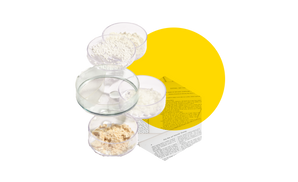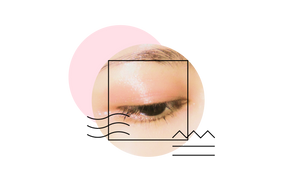Author: Adriana Ermter & Webster Magcalas
Estimated Reading Time: 5 Minutes
Got an itch? Don’t scratch it. And yes, we know that’s a big ask. While itchy skin can be a year-round issue, it tends to show up most frequently during the colder months thanks to the seesawing temperatures outdoors and the overheated indoors.
The Itch’s Main Culprit
Exposure to sub-zero temperatures, followed by the dry, warm air from your cranked-up furnace - especially when repeated day after day - can be hard on your skin's epidermis (the outer layer of your skin). This pattern leaves your skin feeling dry, tight and itchy while looking dull and flaky. To add to that, drastic changes in temperature, and therefore the moisture level of the skin makes you more prone to inflammation. Not a great scenario as this can lead to fine lines and wrinkles, redness, and rashes when untreated. Also known as "Inflammaging." Yup, you need to moisturize, stat.
Why do we itch?
From an evolutionary perspective, scratching an itch can make us aware of issues with our skin, as well as help dislodge any potential insects on our skin. (Does that thought make you itchy? Same). This is why we only itch on the outside surface of our body and not on the inside. (Although it can feel like this sometimes). Learn more about itching here:
Unfortunately, you can't just will yourself to stop itching. Your hand is faster than your will and no matter how hard you try, you won't be able to will yourself into stopping it. The more you think about it, the bigger and deeper the itch will be until it becomes unbearable. (...Is this helping?). Dante Alighieri's Inferno depicted the eighth ring of hell where crooks are punished with "a burning rage of fierce itching that nothing could relieve." The Ao Tribe in Nagaland, India seems to have gotten the memo too, as they punish their delinquents by locking them in a body-tight cage smeared with an itchy paste. We don't know how we would help these poor souls, but for simple itches in our everyday lives, we can help you out.
What You Need and Where
Hydrating your face and body with daily use of serums, creams and lotions and even, weekly applications of masks and balms from head to toe is crucial to help prevent and calm those itchy sensations.
Three Things you need to do:
-
Moisturize
-
Soothe
-
Resist the itch
Moisturize
Apply barrier repair creams with Occlusive ingredients like Petrolatum, Mineral Oil, or Shea Butter AND Ceramides, Cholesterol and Fatty Acids. Look for hydrating serums with lots of Glycerin in them. You can try applying Wave and C.R.E.A.M., followed by a thin layer of Vaseline. Crank up your humidifier at home and aim for around 50% RH.
Soothe
Preventing inflammation (redness, swelling etc) is one of the best ways to reduce itchiness and damage. Look for high potency anti-inflammatories in soothing serums or creams. Colloidal Oatmeal is also a good option for a bath, and you can make your own soothing bath mix by starting with a cup of finely ground oatmeal. (Remember, as soothing hot baths are, when it comes to your skin, lukewarm is a must and definitely no soap). Some papers also recommend bleach bath to kill the microbes in the skin but we think that may lead to more problems down the road.) Oat has Ceramides and other lipids in it that can help with the skin, it also has Avenanthramides that are potent anti-inflammatory agents. Calamine lotion can also help with the itch. Some notable soothing actives that are quite effective are:
-
Hydroxyphenyl Propamidobenzoic Acid - (I know it sounds scary but its just oat) an enhanced form of Avenanthramides from Oat, an excellent anti-itch active. Second best thing to Natural Avenanthramides
-
Hydroxymethoxyphenyl Decanone - aka 6-Paradol, also a potent anti-inflammatory from Ginger (Another scary sounding chemical, but in reality its just from Ginger. FUN FACT: when you sauté Ginger, 6-Paradol is one of those compounds responsible for its gingery smell.)
-
4-t-Butylcyclohexanol - synthetic active that prevents stinging. (Anecdotal: Webster applied it on half his lip, and it reduced stinging from Reaper Chili compared to control)
-
Madecassoside - a pentacyclic triterpene from Centella Asiatica that helps soothe inflammed skin
-
Allantoin - from beetroots, it is used for diaper rashes for babies
-
Bisabolol - the active ingredient in German Chamomile. It helps with redness and swelling.
(If you're wondering why aren't they in any Regimen Lab products, well, stay tuned.)
Here at Regimenlab, we tend to avoid botanical extracts as they may contain hundreds of uncharacterized molecules that could cause allergic reactions. However, some extracts that are characterized and standardized may be beneficial. Case in point: Oat kernel extract (FROM A REPUTABLE SUPPLIER) which is standardized to contain Beta Glucan, Ceramides and Avenanthramides has shown good promise in anti-inflammation. Ginger extract that is standardized to contain Gingerols, Shogaols and Paradol can help soothe inflammed skin. Not all extracts are created equal:
Avoid the Scratch Trap
Trust us when we say that we know how satisfying it feels to scratch an itch, but it will compromise the health of your skin. Scratching can pull and tear the epidermis, further irritating the skin and potentially making it worse. This can lead to longer wait times for your skin to heal. We scratch because it temporarily relieves the pain. Gate Pain Theory: Non-painful input (scratch) closes the gate to painful input (itch). Scratching is our mind's way to relieve/distract from the pain. So instead of thinking about the itch, you would need to distract your brain from the itching sensation. Some of the suggestions we found:
- Put your palm on the itchy spot and gently tap the surrounding areas with your fingers. Imagine your palm to be a healing palm: from a scratching hand to a healing hand.
- Meditate (takes practice)
- Distract yourself with something that requires finger dexterity and concentration
- Scratch Mittens
We can't promise all of these will work but it all boils down to two main things: 1) prevention is better than cure and 2) distraction is the key.


